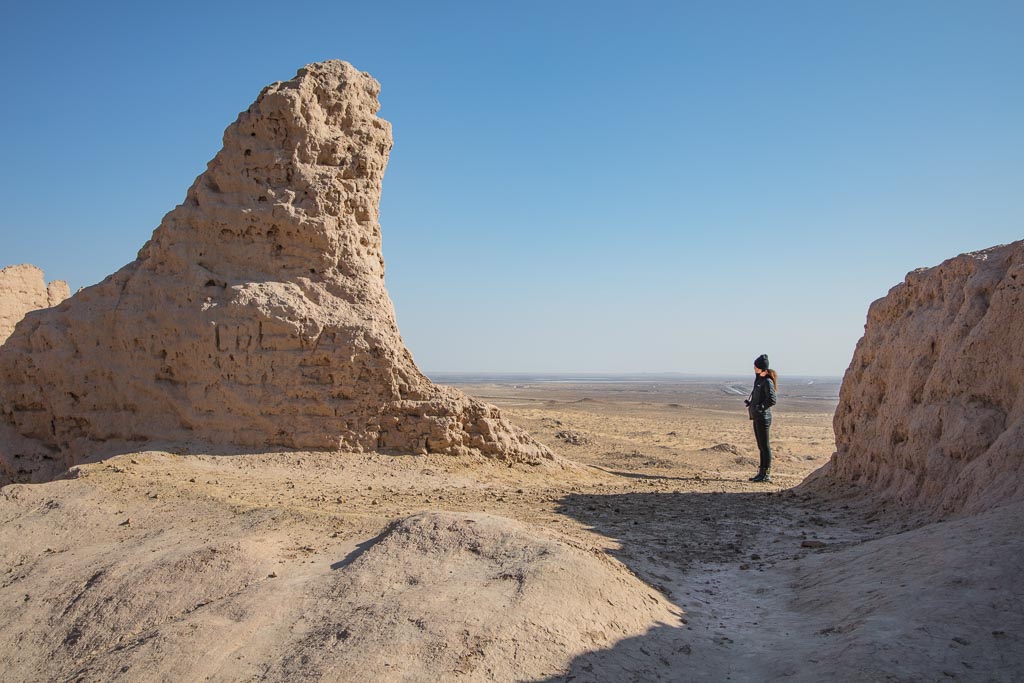
Travel Karakalpakstan
The Stan Within A Stan
Updated November 2023, Travel Karakalpakstan: The Stan Within A Stan was originally written November 2017
Karakalpakstan makes up a sizable area of Uzbekistan– over one-third of Uzbekistan’s landmass. Once prosperous and powerful, Karakalpakstan was a fertile agricultural region. Now the region of Karakalpakstan has nearly been forgotten by the outside world and left in desolate dust.
Karakalpakstan is an autonomous republic in Uzbekistan. Due to the drainage of the Aral Sea, the region went from being one of Uzbekistan’s most prosperous to the poorest. The area is now mostly comprised of desert and includes part of what’s left of the Aral Sea.
The region has drawn people in with its mystery, from the nomadic Karakalpak people to artists such as Igor Savitsky. Karakalpakstan had also drawn negative attention from visitors that don’t give it a chance and can’t appreciate the desolation or history.
Start here: The Uzbekistan Travel Guide
Need Travel Insurance and Evacuation Services for Uzbekistan?
Start shopping for travel insurance plans over at IATI Insurance. Readers of the Adventures of Nicole get a 5% discount off your plan.
The Adventures of Nicole partners with Global Rescue to offer the world’s leading medical evacuation and security advisory services. To travel with peace of mind, shop evacuation coverage at Global Rescue.
Stay online across Uzbekistan
Rent a UZWifi mobile pocket router
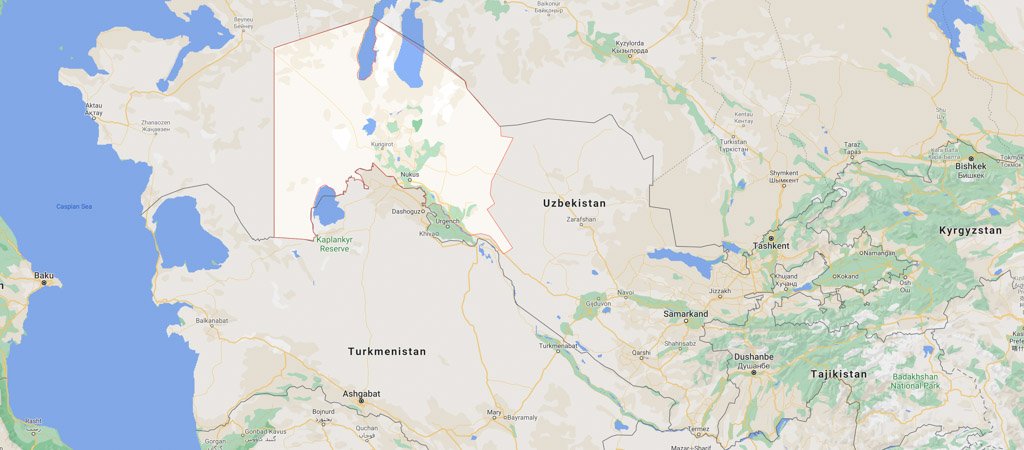
Where to go & things to do in Karakalpakstan
Many tourists will skip over this region as they either think there’s nothing there or just don’t really know anything about it. There definitely are some interesting things here you don’t want to miss.
Want to include Karakalpakstan on your larger Uzbekistan trip? Read: The Perfect 2 Week Uzbekistan Itinerary
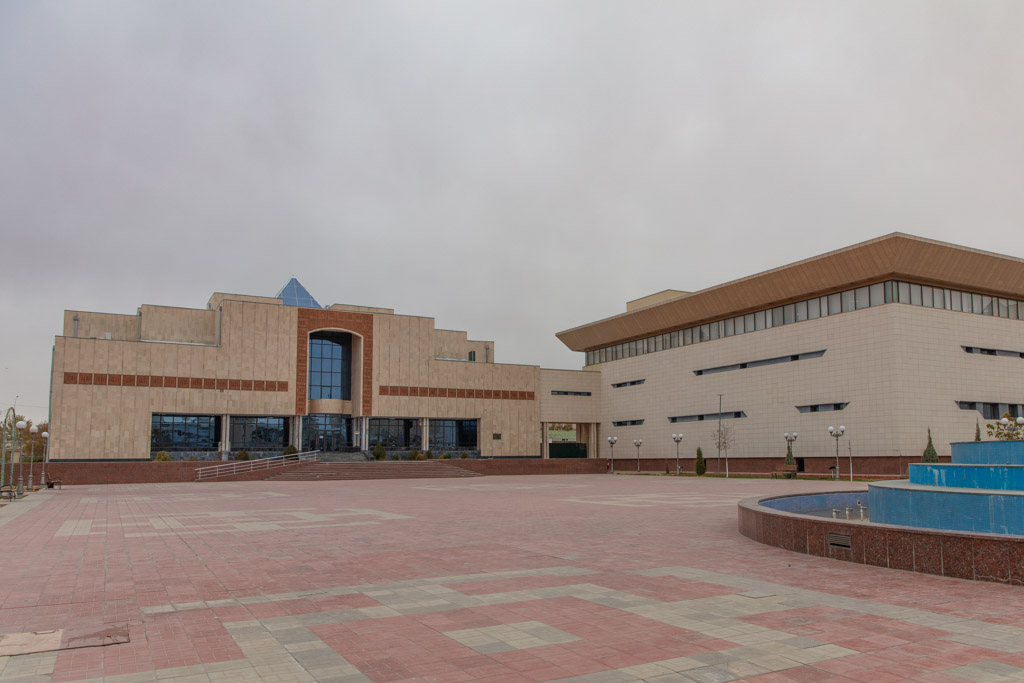

Nukus
Nukus has a bit of a strange feel to it if you haven’t spent much time in the former USSR, but the planned city serves as a great base for exploring the Karakalpak region. Nothing more than a small settlement, Nukus went on to become the capital of the Autonomous Republic of Karakalpakstan after the Soviets decided to move the capital from Turtkul in 1927. Nukus was developed into a modern Soviet city between the 1930s and 1950s.
The highlight of any visit to Nukus is undoubtedly the Savitsky State Museum of Karakalpakstan that houses over 40,000 Russian and Central Asian avant-garde pieces banned by Joseph Stalin. In addition, the Savitsky Museum also features ethnographic and archaeological finds from around the Karakalpakstan region. Igor Savitsky created the secret museum in the deserts of Karakalpakstan, hiding the forbidden artwork from the watchful eye of the KGB.
It wasn’t until 1985 (One year after Savitsky’s death) that this collection was acknowledged for how remarkable it is, and not until 1991 when Uzbekistan became an independent nation that visitors could go to the museum as Nukus was off-limits during Soviet rule.
Other things worth checking out on your stay in Nukus include the Amet & Ayimkhan Shamuratovs House Museum attached to the Jipek Joli Inn, the Nukus Bazaar, the Mosque of Imam Ishan Mohammed, and the Karakalpak State Academic Theatre of Berdakh. Just outside Nukus, the Midzarkhan Necropolis and the Dakhma of Chilpik Qala are must-sees.
Nukus also boasts a surprising number of good restaurants too- giving an ample break from the many plates of plov you’ve likely eaten en route. My favorite of the lot would have to Sofram Turkish Restaurant, followed by the Premier Lounge, Cinnamon Cafe, and Restaurant Neo.
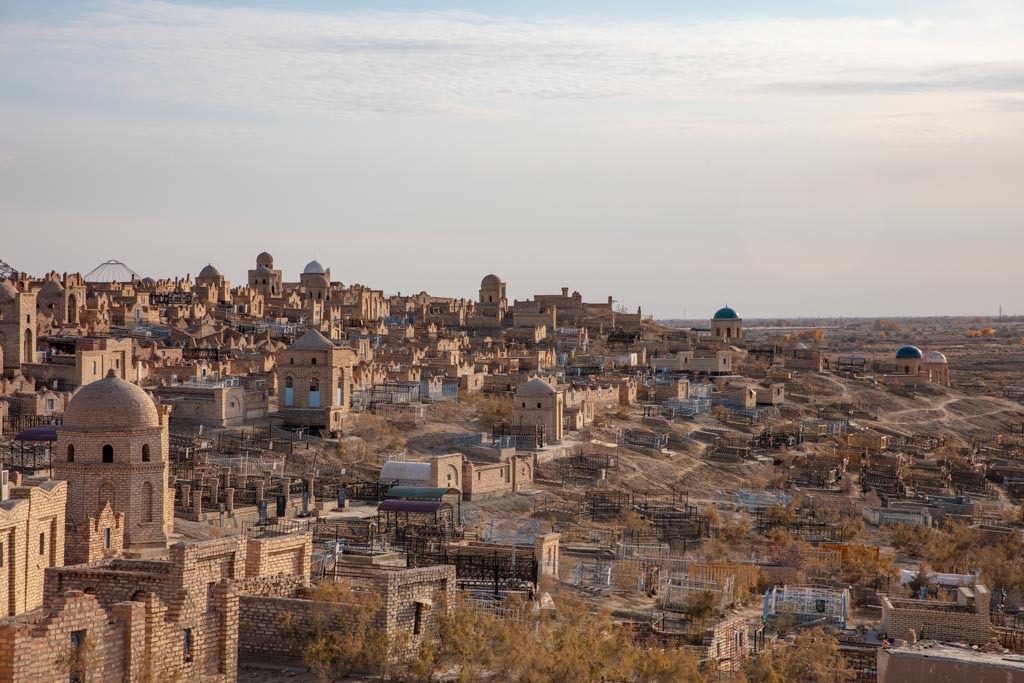
Mizdarkhan Necropolis
Mizdarkhan makes for a perfect side trip from Nukus being located a mere 15 kilometers from the city. At its zenith, Mizdarkhan was the second-largest city in Khorezm, which suffered a similar bloody fate to Konye-Urgench at the hands of none other than Genghis Khan.
The Mizdarkhan Necropolis Complex consists of countless mausoleums and graves, the most notable including the Mausoleum of Mazlumkhan Suu, the Mausoleum of Shaman Nabi, the Jumart Kasaab, and the Tomb of Caliph Yejereb that features the unusual Apocalypse Clocks steeped in legend. It’s believed that the world will end when the last brick of the tomb falls- to counter the apocalypse, visitors build small pyramids around the tomb consisting of seven stacked bricks to buy more time.
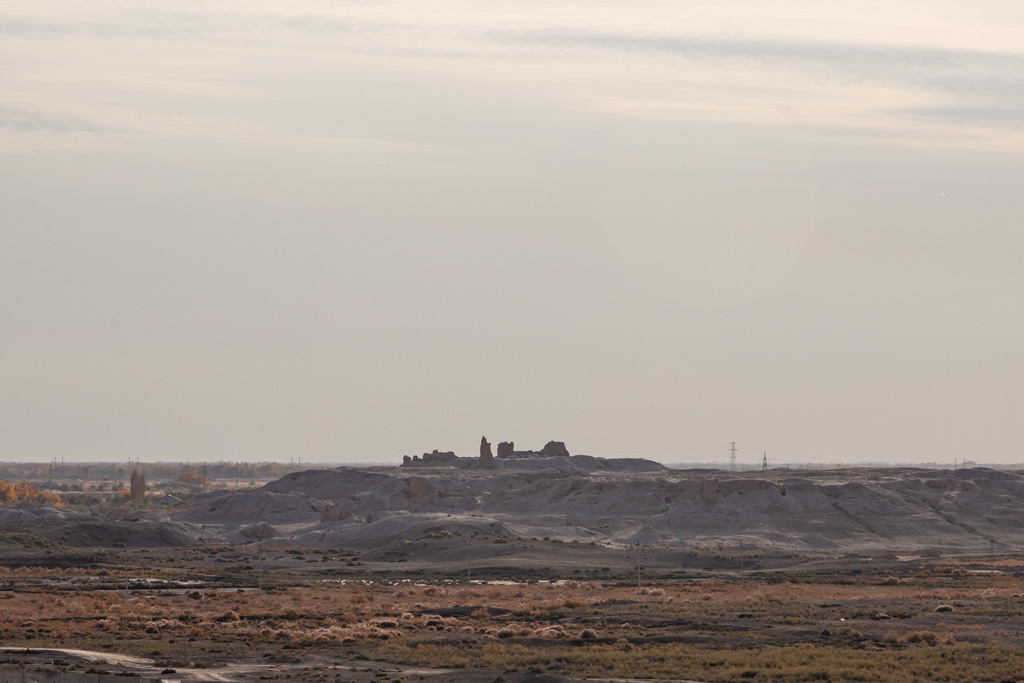
Gyaur Qala
About one kilometer west of Mizdarkhan you’ll find the remaining walls of Gyaur Qala, a 12th-century fortress. Remains of the 10 meter high outer walls of the fortress remain that would have protected two castles built within its boundaries.

Chilpik Qala
Located 50 kilometers east of Nukus, Chilpik Qala is a natural stop for those making the journey between Khiva and Nukus by car. Chilpik Qala is the remains of an ancient dakhma, or tower of silence, which would have been used for Zoroastrian sky burials similar to the Towers of Silence in Yazd, Iran.
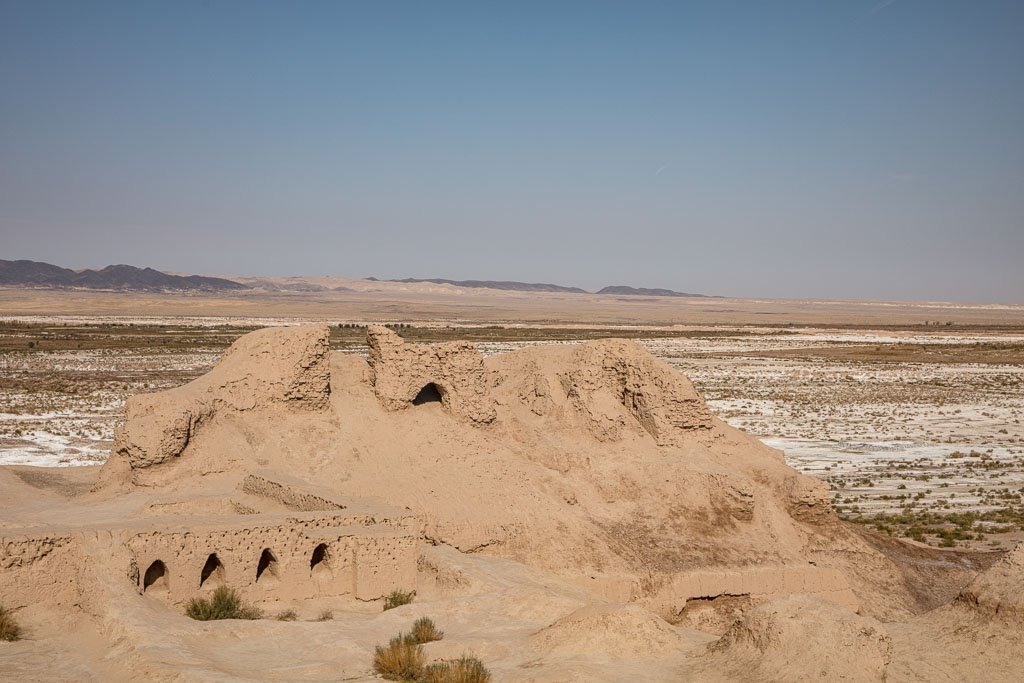
Desert Castles Of Ancient Khorezm
Numerous ancient castles sit perched in the deserts of western Uzbekistan between Khiva and Nukus, the most notable being: Toprak Qala, Ayaz Qala, Kyzyl Qala, Koy Kirilgan Qala, Guldursun Qala, Dumon Qala, Ankha Qala, Kurgashin Qala, and Janbas Qala. Read up more on my guide to the Khorezm Castles.
The earlier mentioned Desert Castles of Ancient Khorezm are a must-see. Built between 4 BC and 7 AD to protect Khorezm from raids. You’ll likely have these desert castles scattered along the Amu Darya completely to yourself as they see nowhere near the traffic that Uzbekistan’s well-known Silk Road cities see.
These castles are important fortifications along the Silk Road and ancient Khorezm played a huge part in the culture and history of the development of trade.
Plan your own visit to the ancient Khorezm Fortresses scattered around Karaklpakstan
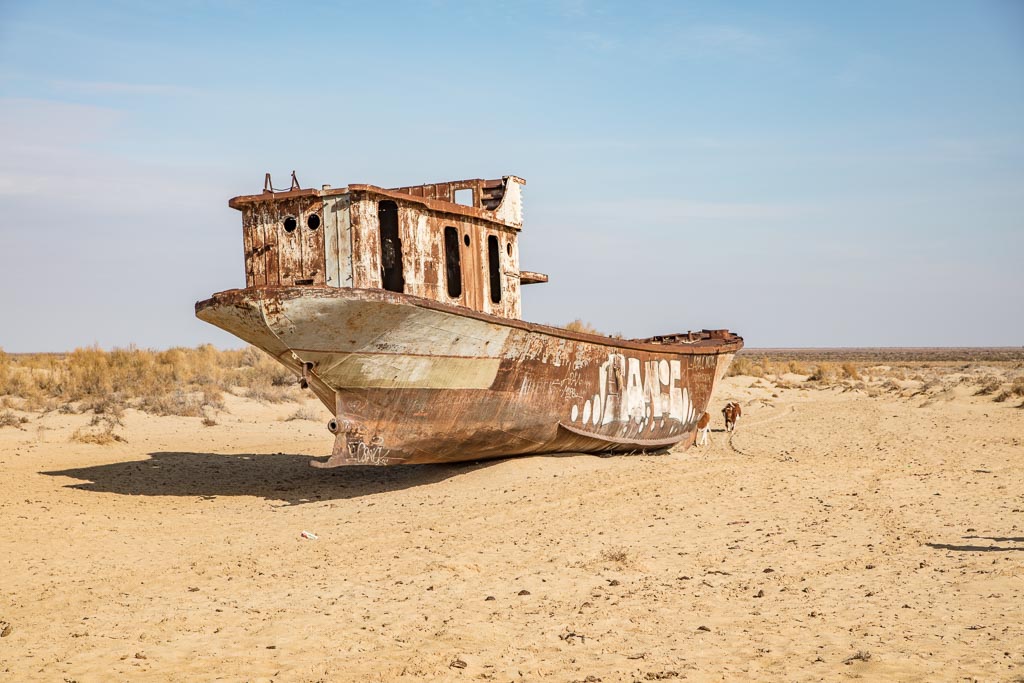
Moynaq
Uzbekistan’s once-bustling port city is now nearly a ghost town with only a fraction of its residents left. The biggest attraction in Moynaq is the Ship Graveyard. In the parking lot for the Ship Graveyard, you’ll also find the Museum of the Aral Sea, which is well worth the 20,000 UZS to learn a bit more about the history of the Aral Sea and the disaster that ensued.

Aral Sea
Poor diversion efforts by the Soviets have turned this once prosperous sea- actually one of the largest, yet shallow and unstable lakes in the world into one of the worst environmental disasters in history. 90% of the lake is gone leaving the basin to desertification and covered in toxic chemicals from weapons testing.
For those wanting to visit the remains of the South Aral Sea, it’s best to arrange a two-day tour that starts and ends in Nukus. Otherwise, you’ll need to have rented a 4WD vehicle to get yourself out there. On our 2021 visit to the Aral Sea, we set up the two-day trip with the help of Islambek Travel that also included the Uzbek Ustyurt Plateau, Kurgancha Qala, Moynaq, Sudochie Lakes, and Barsa Kelmes Salt Flat.
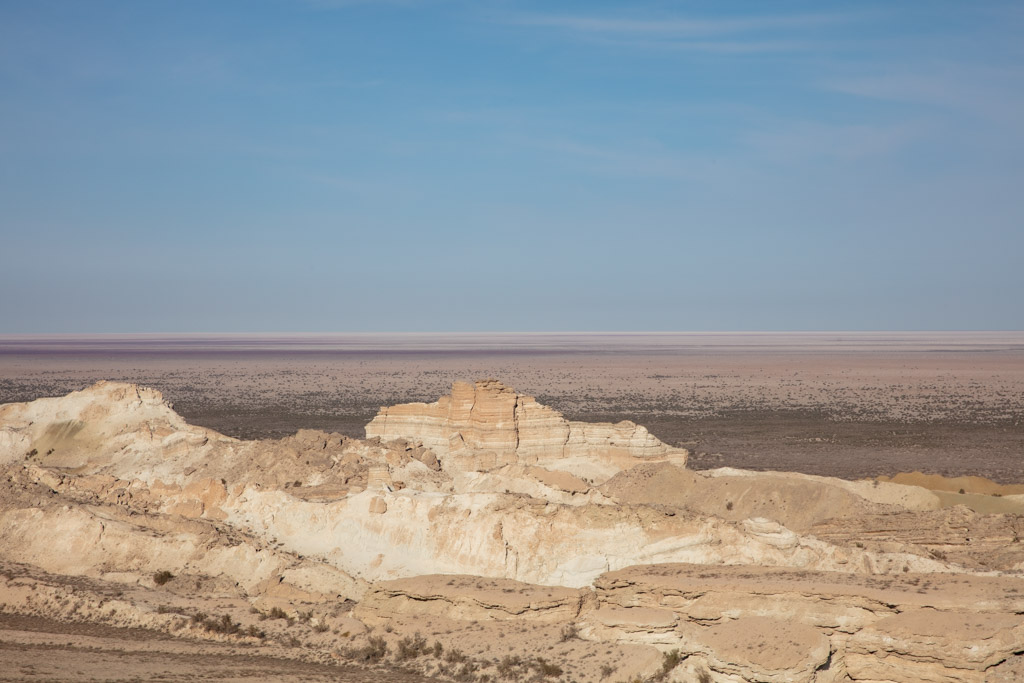
Ustyurt Plateau
The Ustyurt Plateau sits to the west of what remains of the South Aral Sea and extends across the border into Kazakhstan. The plateau features fascinating geological features and stunning landscapes.

Kurgancha Qala
Located on the Ustyurt Plateau and overlooking the Aral Sea, Kurgancha Qala served as a caravanserai, dating back to the 12th century. Travelers, making the journey along the ancient Silk Road would have stopped here before continuing toward the Fergana Valley or further destinations.

Sudochie Lakes & Urga Village
The Sudochie Lakes form part of the Amu Darya Delta with the Ustyurt Plateau forming their boundary western boundary. Sudochie Lake used to be much larger than it is today, but owing to its common fate with the Aral Sea, much of the water has been depleted and now consists of several smaller lakes.
An interesting feature of Sudochie Lakes is the circular islands that dot the waters giving the area a Super Mario meets Western Alaska look to it (if you ask me, anyway. Despite the fact that the lakes have been largely depleted of their water, Sudochie is still an important wetlands area home to 218 different bird species, including flamingos.
For those making the venture out to Sudochie (almost certainly on a two-day Aral Sea tour), the abandoned village of Urga is not to be missed. Urga was once a bustling fishing port with a fish plant, an orthodox church, and a scattering of homes and businesses. Now it sits in ruin, though a couple of the buildings are still in use by the odd fisherman who returns here to go try to net a catch.
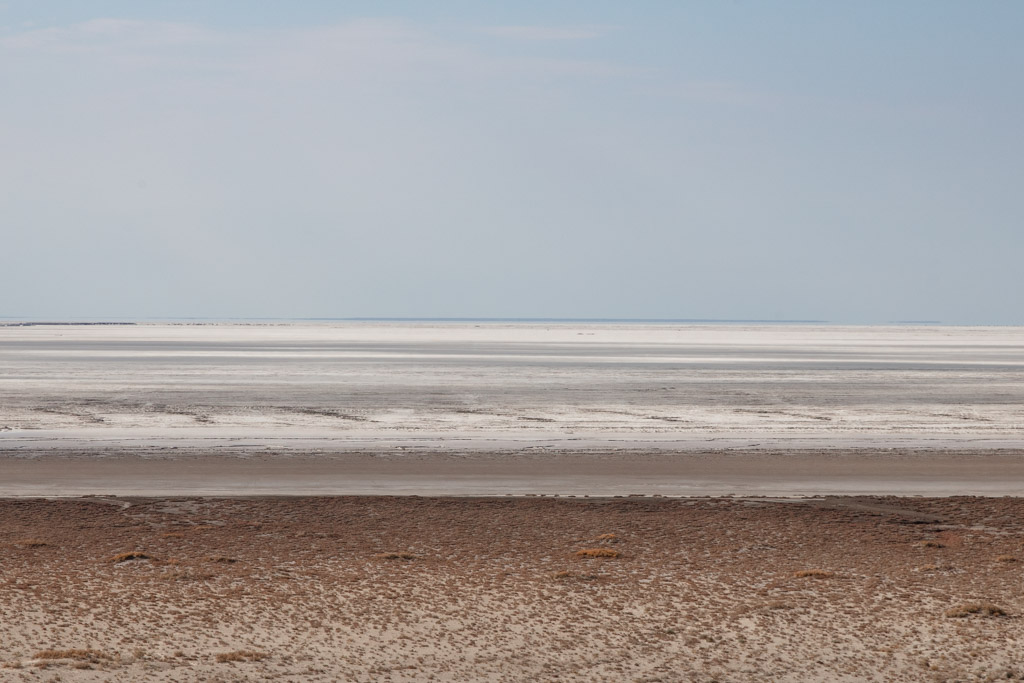
Barsa-Kelmes Salt Flat
Barsa Kelmes is a salt marsh roughly 1/10 the size of the much more famous Salar de Uyuni in Bolivia. It was once a large salt lake, having evaporated long ago. At the east end of the salt marsh, there is a salt mine.
While it is possible to get out onto the salt flat, it’s generally only recommended if you are with someone that knows the area incredibly well as it can be a bit dangerous getting out on it as you can easily sink in the mud beneath. The best time to visit is in the spring and fall.

Aralsk-7 (Kantubek Ghost Town), Vozrozhdeniya Island
Aralsk-7 was a secret biological weapons testing facility located on Vozrozhdeniya Island in the Aral Sea. The likes of anthrax, smallpox, the plague, tularemia, and other viruses and diseases were experimented with here during the Cold War. To cut to the chase- I’ll save you the misery of venturing all the way out to the remote outpost near the Kazakh border- it’s gone, completely demolished.
A friend of mine had rented a 4WD for his greater Central Asia trip, and near the top of his list was to visit the former facilities on Vozrozhdeniya Island, so since we wound up in Nukus at the same time I decided to join him. Much to our dismay, we rolled up to the town of Kantubek where the scientists and workers at Aralsk-7 lived to find that the place had been completely demolished- every last building bulldozed, save an outhouse that was clearly a newer construction (likely for the workers brought out to raze the place).
Ultimately, Kantubek would have made for an interesting attraction for the odd tourist that made it out here wanting to see and learn more about what went on out here- but the government ministry put in charge of it clearly f****d that one up. After getting in touch with a couple of people who know Uzbekistan inside out, I discovered that Kantubek and Aralsk-7 were completely demolished sometime in 2020. Despite this being considered a ‘dark tourism’ site, I do believe it’s important to leave these places standing as a reminder to future generations of things that we may not want to repeat.
For those still determined to visit, it takes about 6-7 hours to reach the site of Kantubek from Nukus, along dirt roads- though there isn’t really anything left to see here, unfortunately.
Read about our visit to the now-demolished Aralsk 7 and Vozrozhdeniya Island
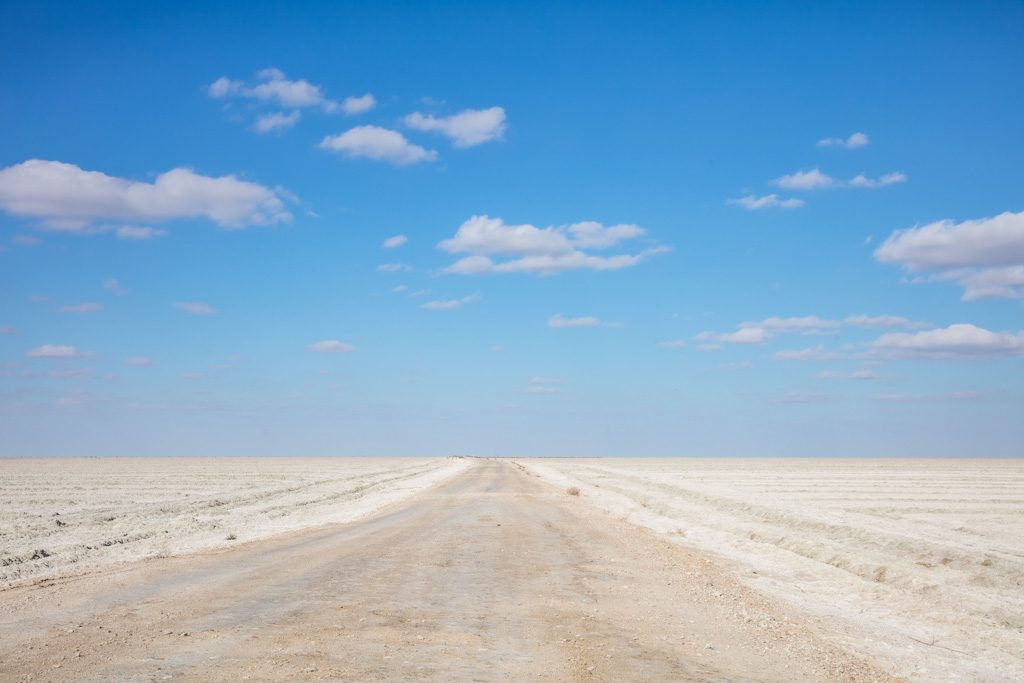
South Ustyurt National Park
On November 11, 2020, a national decree was signed in Uzbekistan to establish the South Ustyurt National Park. The park encompasses 1.42 million hectares of land including the areas around the remaining Aral Sea and Vozrozhdeniya Island. The national park is home to over 700 species of plant, 300 animal species including the endangered Saiga antelope, and is an epic stargazing destination.
South Ustyurt National Park is still in its early phases, so watching the park develop will be interesting to see. The only real indications I had seen of the national park being established were some random signs with pictures of desert plants and Saiga antelope a few hours drive toward Kantubek in the literal middle of nowhere.
Don’t miss the Silk Road cities! Check out my guides to Samarkand, Bukhara, and Khiva
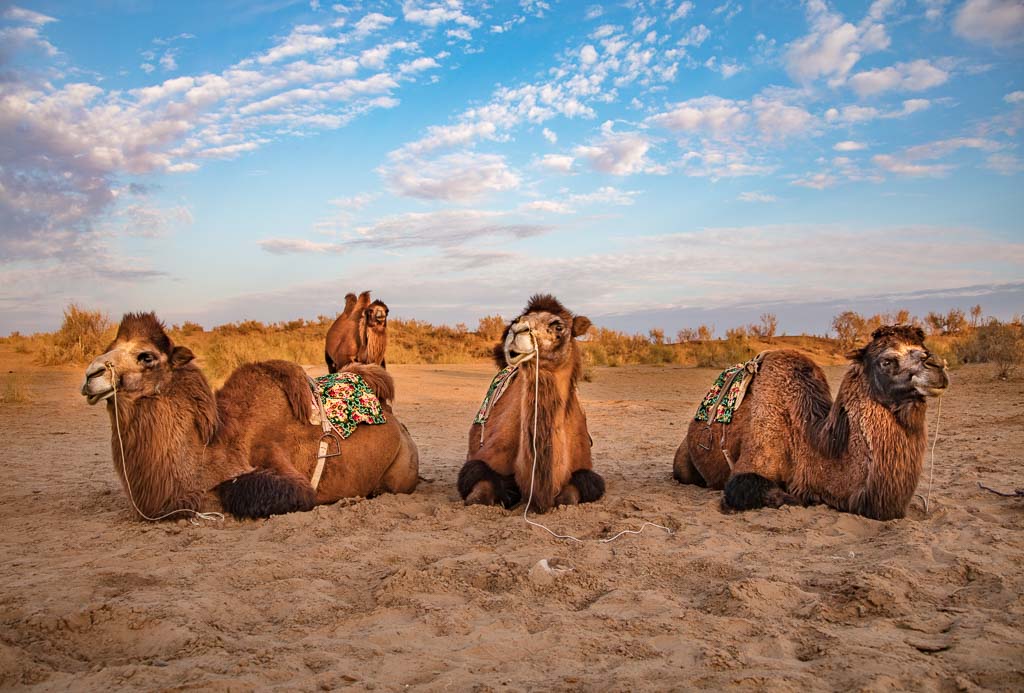
Karakum & Kyzylkum Deserts
Karakum means black sand in the Turkic language, while Kyzylkum means red sand. Both deserts are sparsely populated and see little rainfall.
The Karakum continues into Turkmenistan and makes up 70% of the country. The Karakum Desert sits southwest of the Kyzylkum.
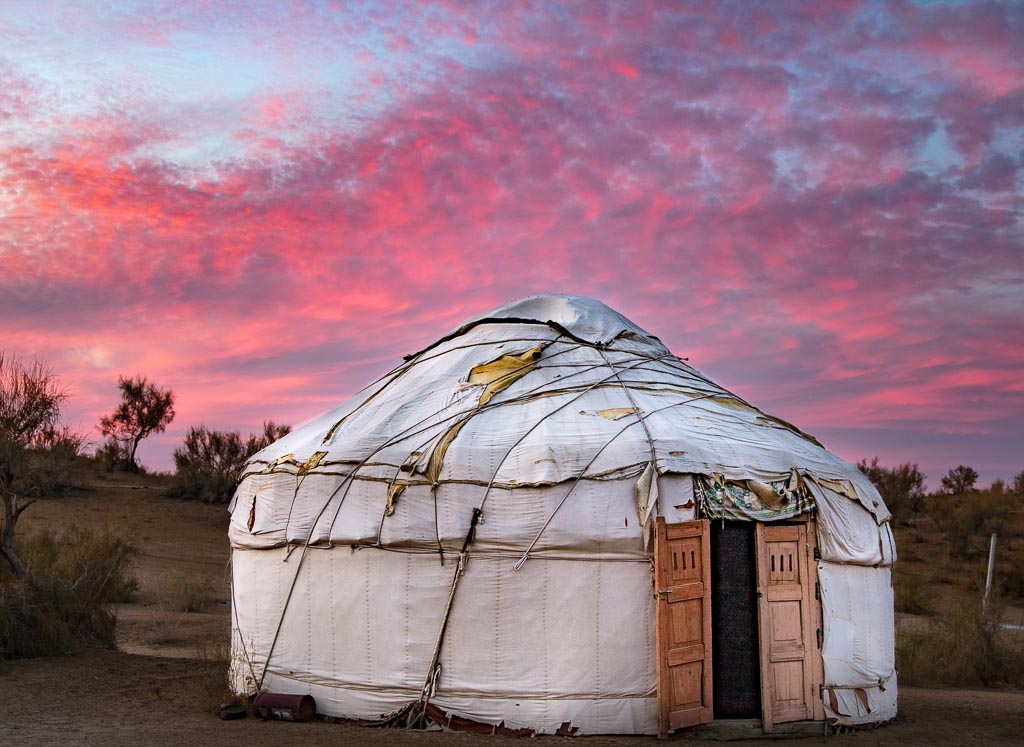
Yurtmaking in Aul Topi & Chimbay
Meet the people that settled the Lower Amu Darya and southern shores of the Aral Sea. The Karakalpaks are incredibly warm and welcoming. If you do decide to explore out into rural Karakapakstan far enough you can still find families that still put up the traditional summer yurts.
In the areas of Chimbay and Aul Topi it’s possible to set up day and overnight trips from Nukus to visit local Karakapak families and learn a bit more about the construction of the traditional Karakalpak yurt.
Off to Turkmenistan next? Check out Turkmenistan in photos
Money In Karakapakstan
The Uzbek Som (UZS) is the official currency throughout all of Uzbekistan. Current exchange rate (October 2023) is $1 USD = 12,205 UZS. ATMs and currency exchangers are available in major cities and towns.
Getting To Karakalpakstan
Most that do travel Karakalpakstan include it in a tour of greater Uzbekistan and even Turkmenistan that would bring them in overland from Khiva.
Flights
If entering Karakpakstan by flight it will likely be via Nukus Airport. Its only connections are Tashkent and Moscow-Domodedovo.
Shared Taxi
It is possible to arrange a shared taxi from Khiva or Urgench. Expect Urgench or Khiva to Nukus to run 48,000-81,000 ($6-10 USD) per seat.
Train
There are Nukus bound trains via Samarkand from Tashkent. Check out the schedule here.
Getting Around In Karakalpakstan
Karakalpakstan isn’t easy to get around with the desolation and isolation and all. Expect to go by taxi to places such as Moynaq and ship graveyard and the going rate roundtrip will set you back about $40 USD roundtrip (3 hours each way), best to find other travelers to pitch in on the expense.
A minibus will cost about ($100 USD) roundtrip for the entire vehicle.
Allegedly there is a bus between Nukus and Moynaq, but I went in with a group on a minibus, so I have no information on the regular bus for times, frequency, or cost.
To go further afield to travel Karakalpakstan it would be recommended to book a tour with a local guide and 4×4 through a local travel agent and find a group of travelers to try and share the cost.
Where To Stay In Karakapakstan
Nukus
Options are very limited. I personally stayed at the Jipek Joli Inn (Booking.com | Hotels.com). The other option is the Hotel Jipek Joli (Booking.com | Hotels.com).
Moynaq
In Moynaq the only hotel option is Hotel Oybek (I haven’t stayed here, so can’t report anything on it). Apparently, there are homestays in Moynaq, but I have heard that they are not allowed to let foreigners stay.
Ayaz
In Ayaz, near Ayaz-Qala Fortress (between Urgench and Nukus) there is a yurt camp. The cost is $30 USD per person per night and includes breakfast, lunch, and dinner. Can arrange camel rides from here as well. E-mail [email protected] to book, otherwise try to book the yurt camp through a travel agent in Khiva.
Everywhere Else
It would be a good idea to bring a tent as you may very well be camping outside of any settlement. If you do go on a tour to the Aral Sea they will likely provide a tent for you.
Karakalpakstan Guidebooks
I definitely recommend the Bradt Guides Uzbekistan as it is the most informative guide in print. Lonely Planet’s Central Asia has some information on Karakalpakstan in it and is handy on the road, especially for those on multi-‘stan itineraries.
Have Any Karakalpakstan Travel Questions?
Ask your Karakalpakstan travel-related questions in the comments section below.
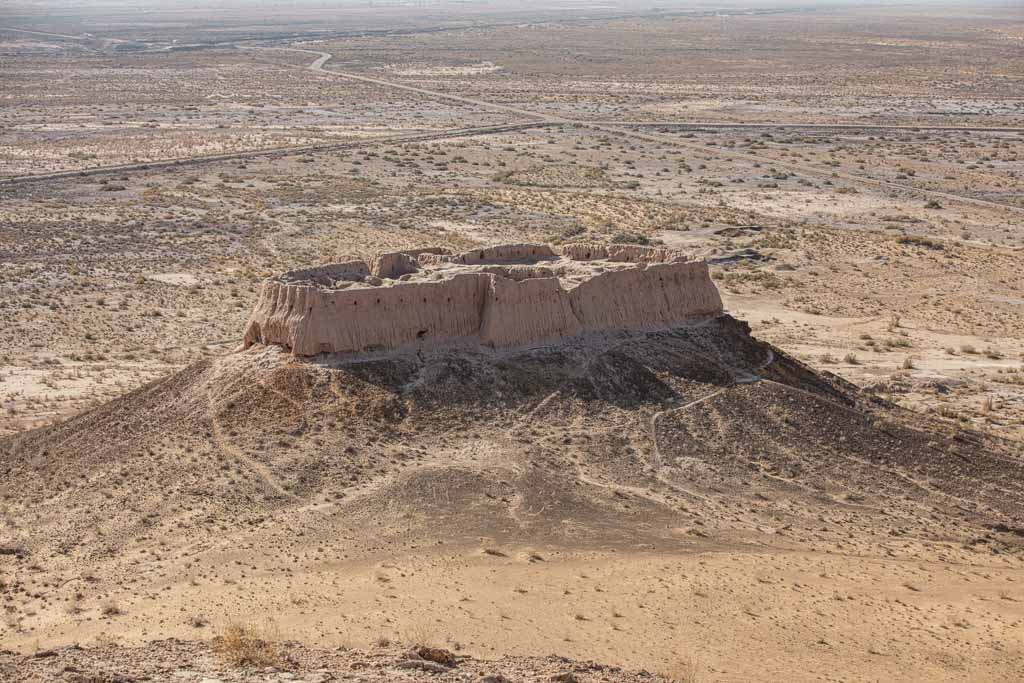
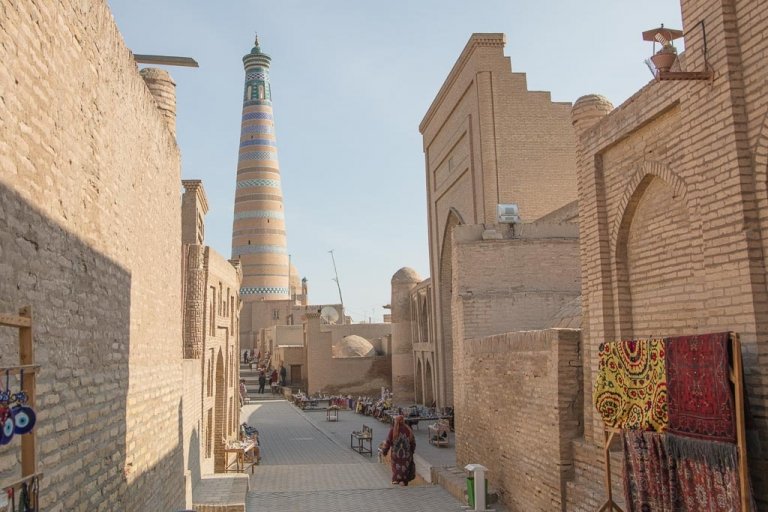
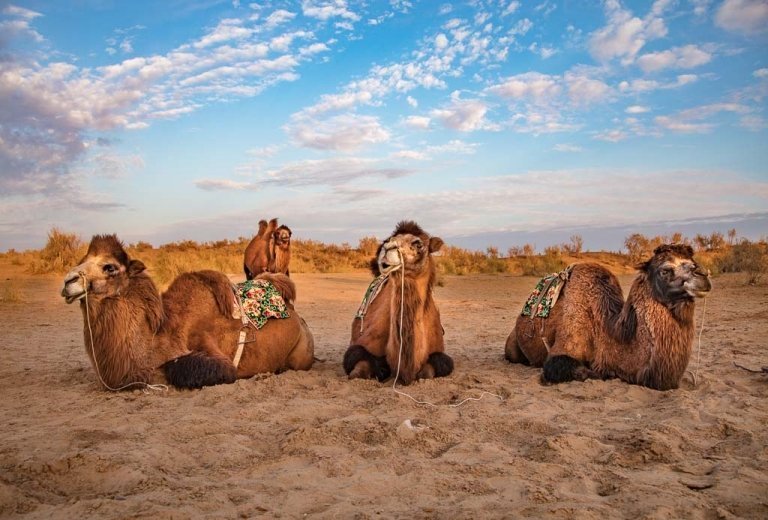
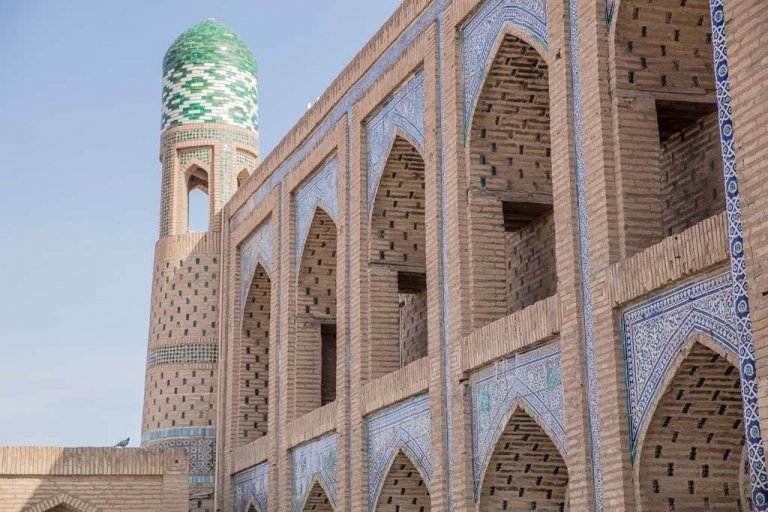

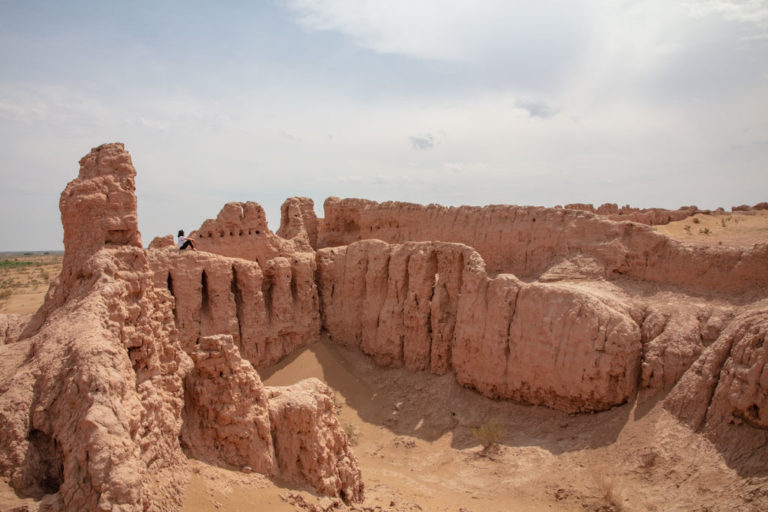
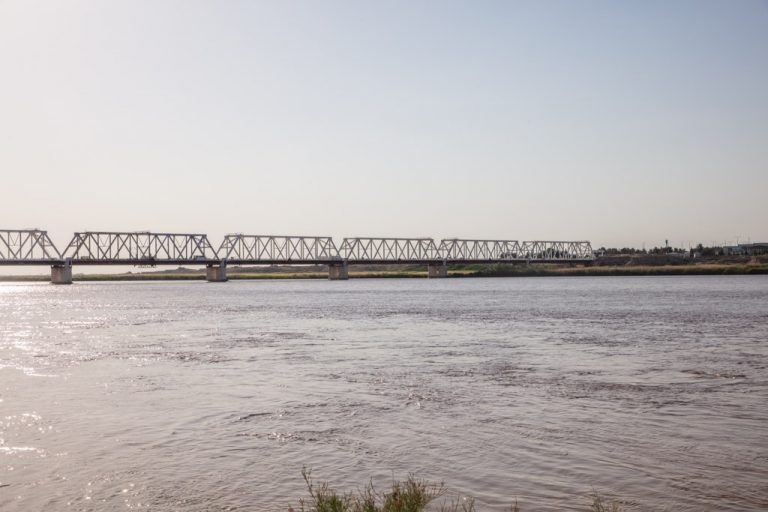


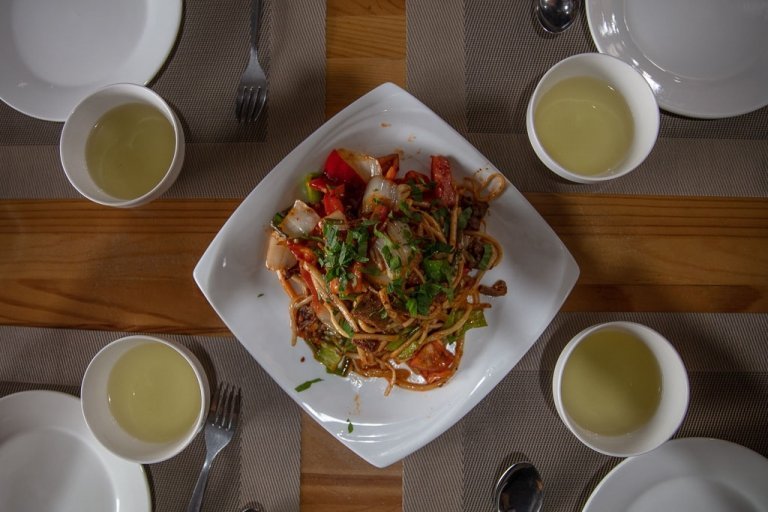
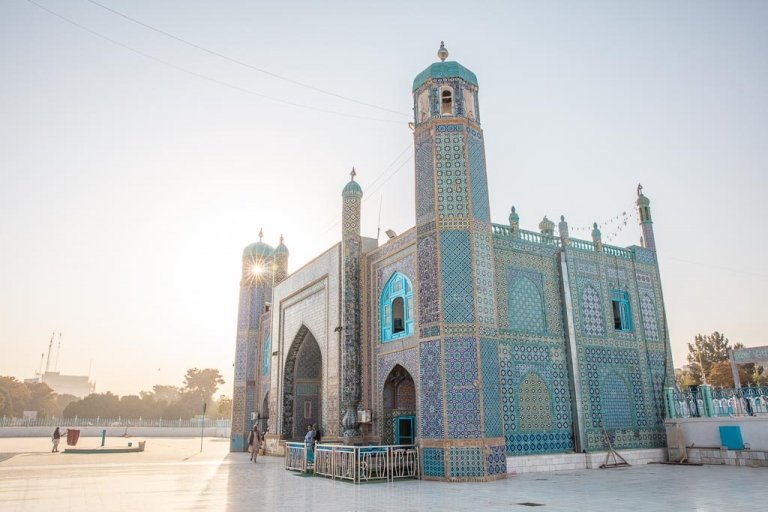
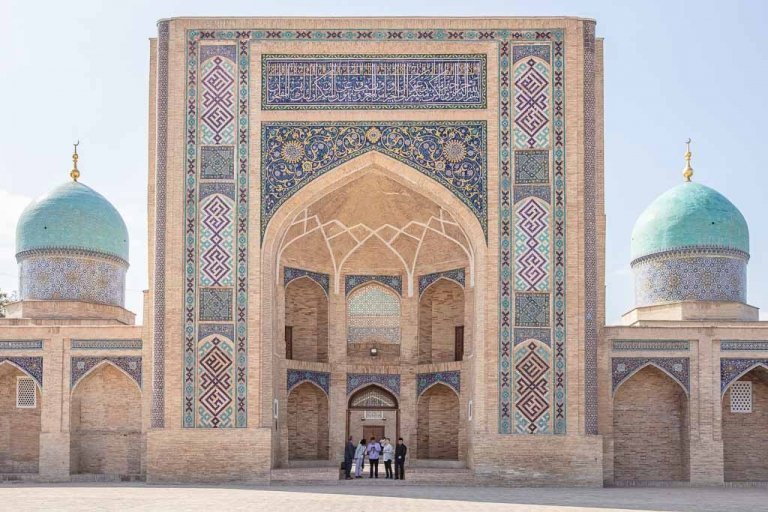
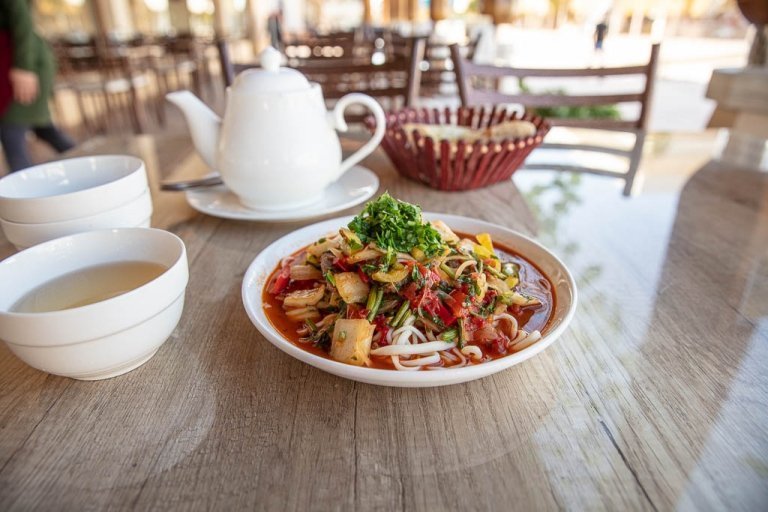
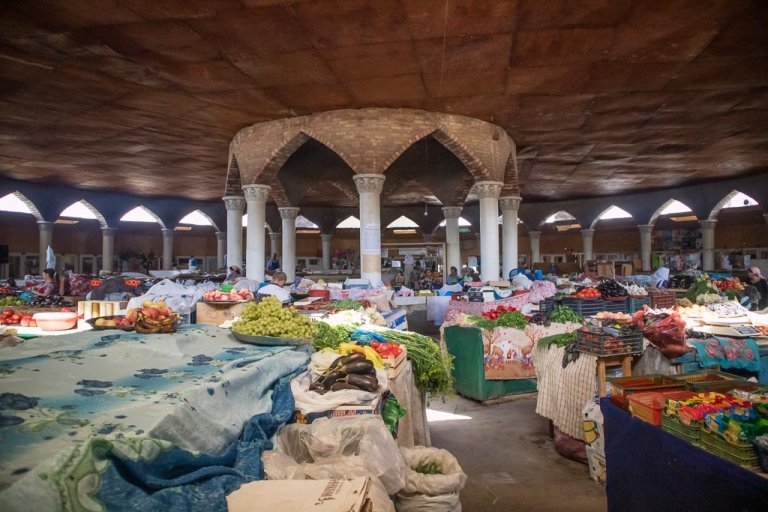


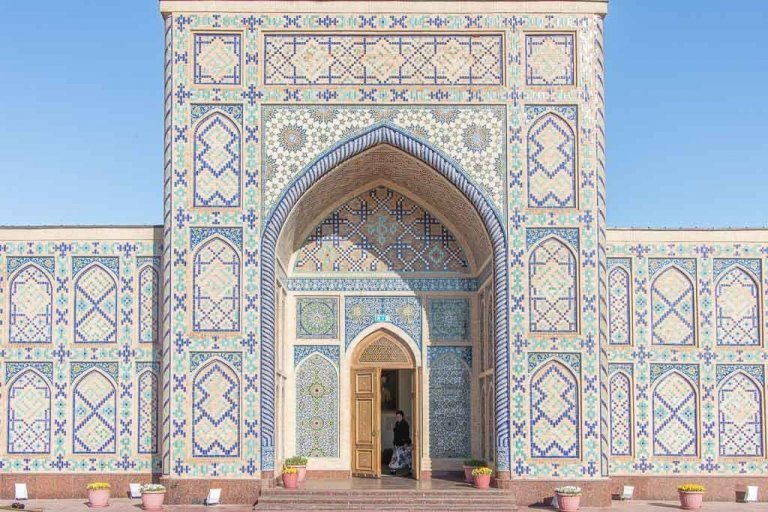
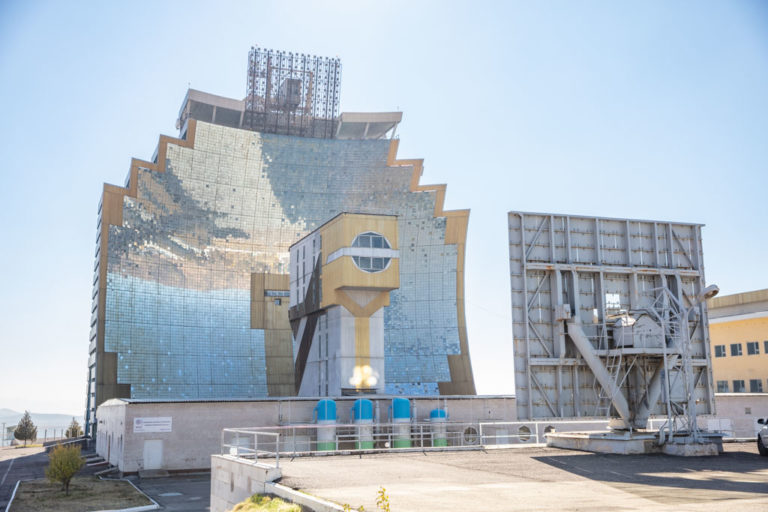

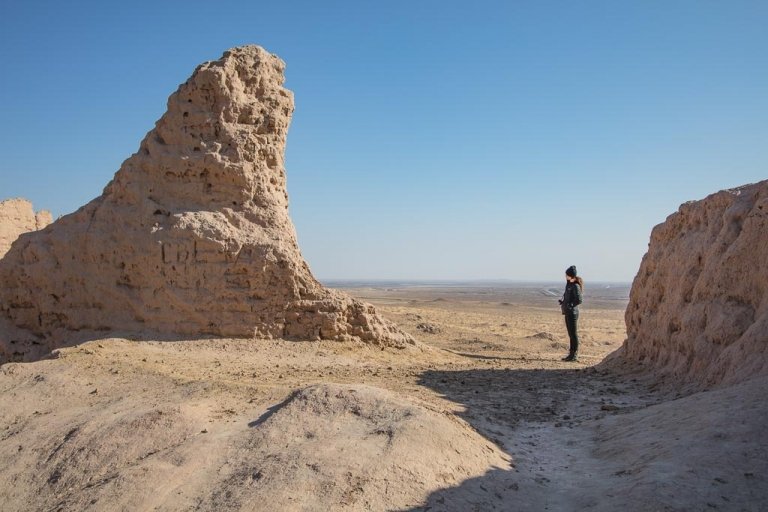

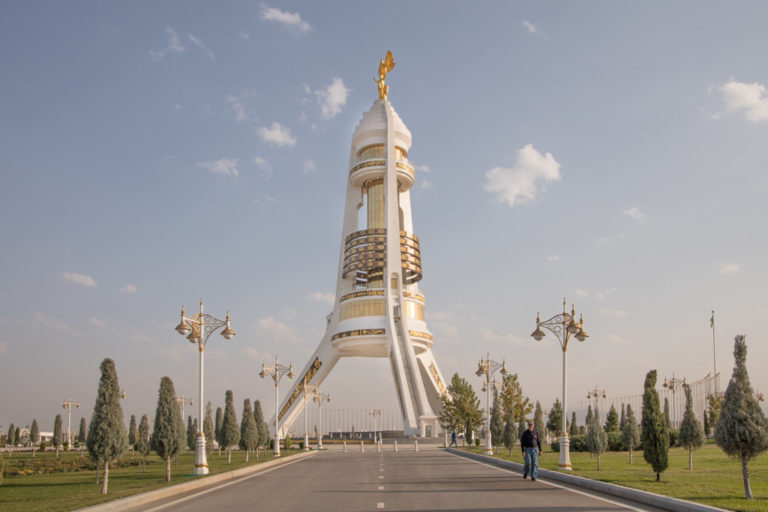
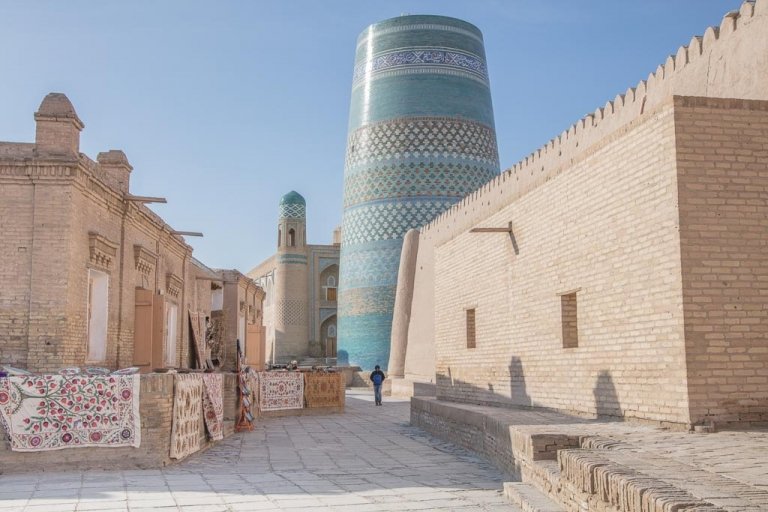

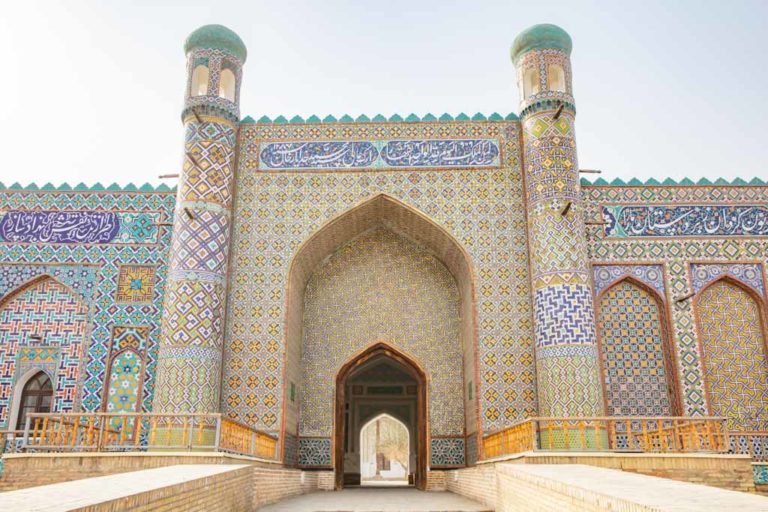

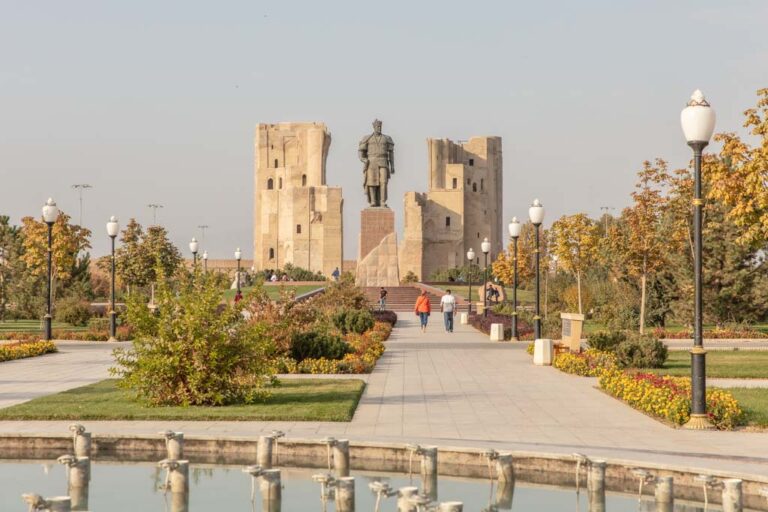
Wow! I am from Karakalpakstan and I have an upcoming presentation in my international class about my region. I was struggling to find relevant information until I stumbled upon your page. The content has been incredibly helpful and informative. I appreciate the comprehensive details you provided about Karakalpakstan. Please continue sharing such valuable information. Thank you so much, and I wish you continued success in your efforts! <3
Hi Gulbanu, that’s great to hear. I am hoping to get back to Karakalpakstan this year to explore more of it. There just isn’t much info on it on the internet
This place looks like such an oddity. I’ve started searching deeper on Central Asia and have decided 2020 is the year I’ll finally visit. Karakalpakstan is on my list, thank you for this information.
Very nice place to visit! Also recommend to visit other magic places of Uzbekistan.
Yup Uzbekistan has tons of great places to visit.